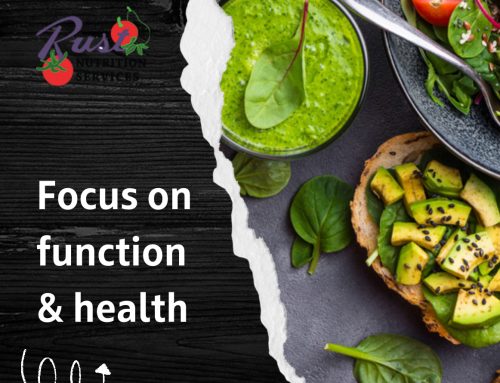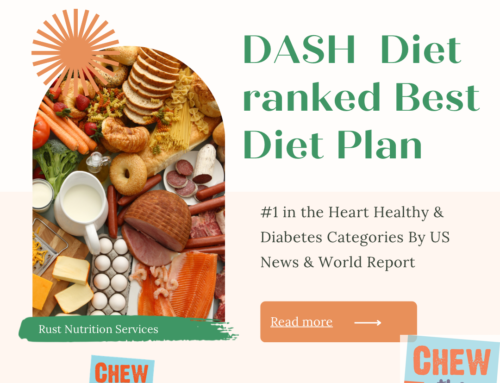A Weight Loss Message: You Don’t Have to be Perfect
A recent New York Times editorial by Tara Parker-Pope about her struggle with weight over her lifetime thus far, and her inability to maintain a weight loss, generated a lot of buzz in my nutrition and science circles about what the real answer is to preventing or treating obesity is. Is it calories in and out, genetics, or the environment? Are carbohydrates solely to blame?
David Katz, MD, wrote a great piece in response to the NYT article. He points out “… we have devised a modern environment in which physical activity is scarce and hard to get, and calories are unavoidable.” I agree.
Consumers often wonder: “How are you supposed to know who or what to believe?” This question is valid given the loads of skewed nutrition facts out there to read and hear. Despite a hunger for science-based knowledge, even experts get distracted with their own anecdotal evidence. However while it appears that the “facts” change all of the time, they really haven’t changed that much. Our environment and food supply have however. Some dismiss that our DNA is changing, but I think it certainly might be. In addition, the human body is so complex that there is likely not one answer to the burning question: Why are we getting fatter?
I have my own (science-based) opinion. It’s simple and shared by some but not all, but is true, most of the time: Our nation is getting fatter because we eat too much and are much more sedentary than we were 30-50 or more years ago. Some of the debate includes lashing out against carbohydrates. I don’t recommend low carbohydrate diets for the general population, although they are appropriate for some people who are at risk for, or already have metabolic syndrome. This is part of the problem with trying to pinpoint one solution to weight management: Everyone is different.
I also do not hold the opinion that everyone should be skinny, but instead they should simply work on being less fat and more fit. Unfortunately we see television and magazine ads (especially this time of year) promoting weight loss programs that pictorially show “drastic results”. This isn’t necessary. Someone who is a hundred pounds overweight will benefit from losing 10-20 pounds and does not necessarily have to get to some drastically different weight. Furthermore they will be more successful (as in sustainable long-term weight loss) if they work on losing those twenty pounds over a year, and not a two-month period.
Unlike physicians or science journalists, most registered dietitians have experiences in determining what those individual differences are, and create solutions to correct the imbalance. Much of this work is rooted in behavior. Individuals must truly work on forming healthier eating habits, and stop worrying about certain foods or food groups. Shoot for healthier, not perfect.
My definition of “healthy eating habits” looks like this:
- Eating small amounts of food at about the same times each day, preferably 3-5 times a day.
- Consuming plenty of water, and limiting all nutritive, caloric beverages to no more than about 24-36 ounces a day (these would be nonfat or low fat milk, fruit or vegetable juices).
- Limiting non-nutritive caloric beverages (soda, sports drinks, juices, alcohol) to no more than 16 ounces a day (less on most days for most people).
- Enjoying the food choices you make, and add variety to your diet – in other words, eat all types of food that you like, just not too much of it.
- Do, however, try new foods. Aim for adding more fresh fruits and vegetables into you diet – and eat the ones you like. Invest in a few good cookbooks, or get adventurous and order the veggie side dish at a restaurant.
- Limit deep fried food. Who doesn’t love fried food? I enjoy potato chips or a good French fry or fried seafood once in a while, but eating fried food daily is not going to keep you at a healthy weight, so enjoy it only occasionally, and eat less of it.
- Sit down and enjoy your food. Being distracted while eating does not allow you to focus on how the food tastes, and when you are full. You also may tend to eat too quickly.
- Exercise. In 2012, when we have technology at our fingertips that was unimaginable in 1965, we must make an effort to move our bodies. We actually must think about it and plan it, because our day to day lives rely on technology that forces us to be sedentary: Sitting at computers, using automated devices such as microwaves, automatic washing machines, coffee grinders (my grandmother used a hand-crank to grind beans), snow blowers, leaf-blowers, people-movers, cars, buses, elevators, etc.
Quick Tip:
Some colleagues were recently discussing the “80/20 rule” to eating. The idea is this: Focus on eating well 80% of the time, and don’t worry about the other 20%. Some prefer to use a 90:10 ratio. Either way, it’s realistic, doable, and can result in good health overall (think: instead of losing 50 pounds, you sustain a 20-pound weight loss).
Bottom Line: Believe what truly makes sense, is realistic, and is science-based.
I’ve worked in various capacities in the food and nutrition profession. This includes years of clinical work (hospitals), counseling, assessment, consulting, and just generally observing human behavior. Mammals like to take the easy way out. Honey tastes sweet, and we like it. Exercise is like work sometimes. Yet to change our national health, we have to work at changing our own behaviors. And this doesn’t happen overnight either. I prefer to choose behaviors I can live with for the long haul instead of short-term solutions. This includes both allowing chocolate or a cookie into my diet, and getting my butt off the chair for 30-60 minutes five days a week. What about you?




